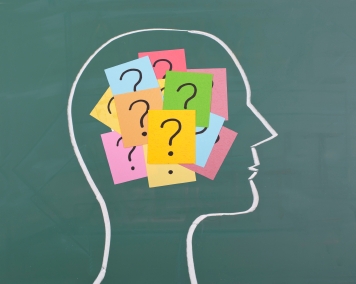Structural abnormalities in children's brains persist in children and teens for months after mild traumatic brain injury (mTBI) or concussion, even when symptoms have cleared and results on neurocognitive tests have returned to normal, finds a sobering new study1 in the Journal of Neuroscience.

Using an advanced imaging technique known as diffusion tensor imaging (DTI), researchers at the Mind Research Network and University of New Mexico found that structural changes to the brain's white matter - the long fibers that carry information from one area of the brain to another - detected in small group of children and teens within 21 days of concussion persisted four months after injury.
Initial testing had revealed that the children with mTBI had subtle cognitive deficits and changes in white matter compared to a healthy control group. While they reported no concussion symptoms during follow-up visits months later, DTIs of their brains revealed that the structural changes remained.
"These findings may have important implications about when it is truly safe for a child to resume physical activities that may produce a second concussion, potentially further injuring an already vulnerable brain," said lead author, Andrew Meyer, PhD, associate professor of translational neuroscience at the Mind Research Network and research assistant professor in the psychology department at the University of New Mexico. Recent studies suggest that the developing brains of children may be more vulnerable to the effects of mTBI and concussion.
"The magnitude of the white matter changes in children with mild traumatic brain injury was larger than what has been previously been reported for adult patients with mild traumatic brain injury," Mayer said. "This suggests that developmental differences in the brain or the muscular-skeletal system may render pediatric patients more susceptible to injury."
Based on the imaging data collected during the study, the researchers were able to accurately distinguish the brains of patients who had mild traumatic brain injury from those who were healthy 90 percent of the time. Such findings suggest DTI, which does not require the use of ionizing radiation, could one day be used to diagnose the injury and to better characterize the recovery process in the brain.
Further study needed
Christopher Giza, MD, an expert on developmental brain injury from the Mattel Children's Hospital and the Brain Injury Research Center at the University of California, Los Angeles, who was not involved in the study, noted that while the number of patients in the study was small, the findings mark "an important step forward in our understanding of the effects of mild traumatic brain injury on the developing brain."
"Further work is needed to determine whether the changes in white matter present at four months represent a prolonged recovery process or permanent change in the brain," Giza added. "Determining the duration of the structural changes, and whether these changes have clinical implications, remain critical areas for future studies," he said.
Rosemarie Scolaro Moser, PhD. Director of the Sports Concussion Center of New Jersey, Director of Research Programs for the International Brain Research Foundation, MomsTeam.com's youth sports concussion neuropsychologist, and a member of the Centers for Disease Control and Prevention's Pediatric Mild Traumatic Brain Injury Panel, concurred in Giza's assessment. "This study greatly adds to our knowledge of what happens to youth brains after a mild traumatic brain injury, especially with regard to diffusion and white matter abnormalities in the brain," Moser said
"We can no longer assume that just because cognitive difficulties have resolved, that structural changes in the brain have also returned to normal. Mayer and his co-authors suggest that post-concussion cognitive tests and anosotropic diffusion tests are measuring different things, and that it takes longer for the pediatric brain to heal than has been previously thought."
Limitations
Moser noted, however, several limitations to the study warranting careful interpretation of the results. The small sample size could have resulted in a sample bias, she said, and "we don't know whether factors such as previous concussion history or years of athletic participation were different in the normal vs. tbi group"
"Furthermore, 9 out of 15 participants who suffered a pediatric traumatic brain injury also sustained either a brief or prolonged loss of consciousness. Typically, there is usually not that high a prevalence of LOC in sports concussions [recent studies suggest that LOC is present in only 5 to 10% of concussions],2 so it may not be clear how to apply these results to return to play decisionmaking."
Supports more conservative management
"Nonetheless, the study is sobering and supports the results of my studies3,4 on the prolonged and enduring effects of concussion in youth. All the more reason to keep kids out of contact risk as long as possible after being symptom free." Moser concluded.
Sources: Radiology Daily (December 13, 2012); Society for Neuroscience.
1. Mayer AR, Ling JM, Yang Z, Pena A, Yeo RA, Klimaj S. Difficusion Abnormalities in Pediatric Mild Traumatic Brain Injury. J Neurosci 2012;32(50):17961-17969.
2. Meehan W, d'Hemecourt P, Comstock D, "High School Concussions in the 2008-2009 Academic Year: Mechanism, Symptoms, and Management" Am. J. Sports. Med. 2010; 38(12): 2405-2409 (accessed December 2, 2010 at http://ajs.sagepub.com/content/38/12/2405.abstract?etoc).
3. Moser RS, Schatz P, Jordan BD. Prolonged Effects of Concussion in High School Athletes. Neurosurgery 2005; 57(2):300-306.
4. Schatz P, Moser RS, Covassin T, Karpf R. Early Indicators of Enduring Symptoms in High School Athletes with Multiple Previous Concussions. Neurosurgery 2011;68:1562-1567.
Posted January 2, 2013








